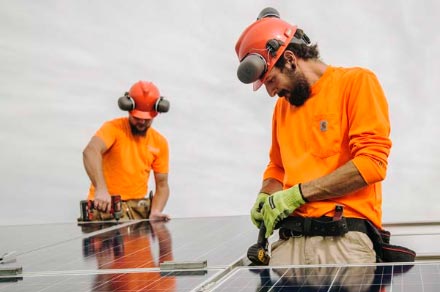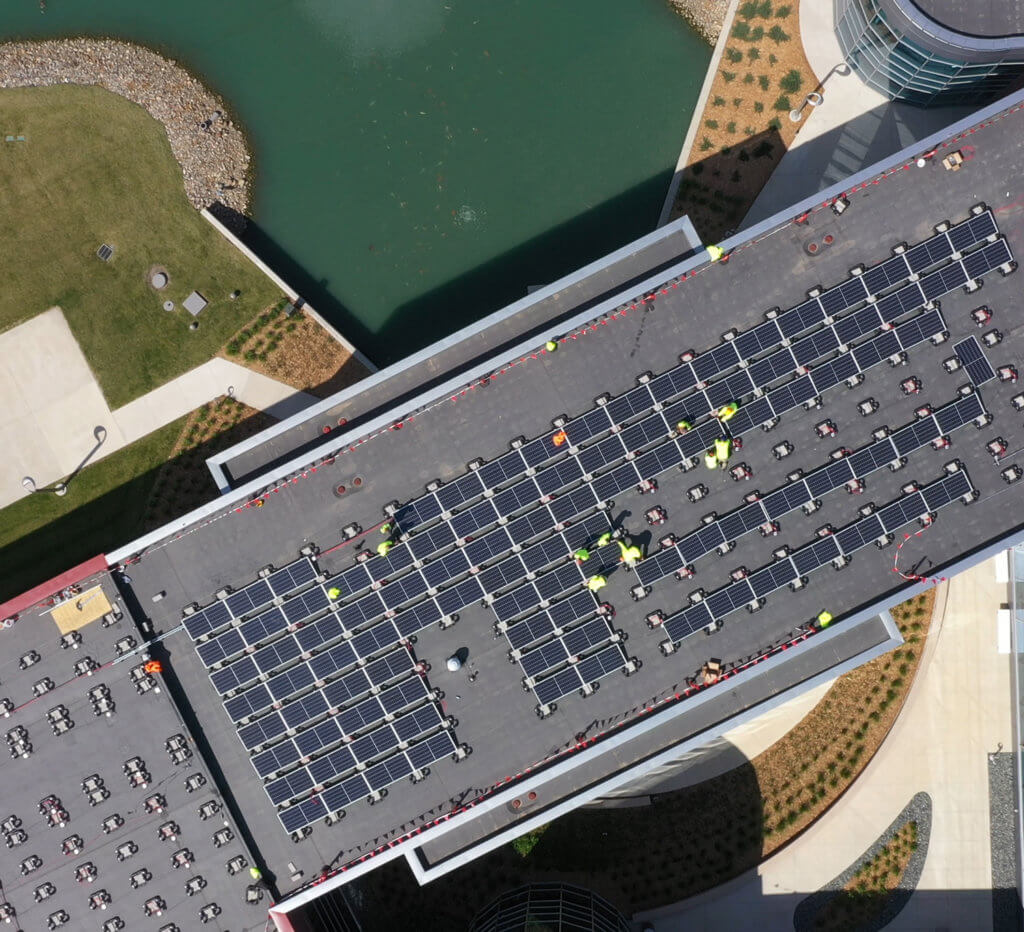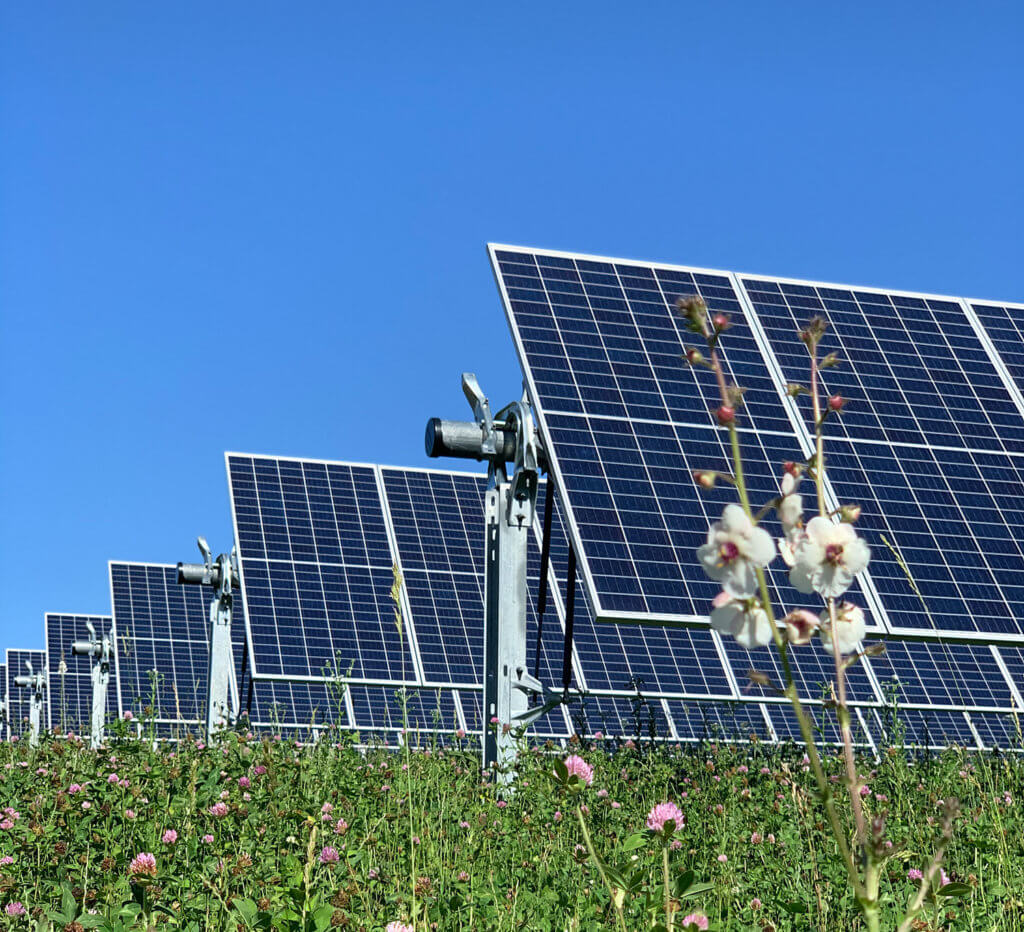GREEN INDUSTRY
The Schaus-Vorhies Companies group has a long history of community-oriented and sustainability-focused projects. Some of the business’s past projects include the Fairfield Arts and Convention Center, the Pilot Grove Savings Bank, contributions to the Jefferson County Loop Trail system and the restoration of the clock tower atop the Jefferson County Courthouse.
They also built Cambridge Investment Research’s offices, which are LEED Silver certified by the U.S. Green Building Council. The buildings feature geothermal heating and cooling, low flow fixtures, natural lighting, and low VOC paint and carpet. The parking lot has a reflective surface that reduces the heat island effect.
SVM has also donated the use of its land, power, and water for an insulated greenhouse as part of the Iowa Department of Agriculture’s Farm-to-School Program. The greenhouse is filled with certified-organic topsoil. It’s warmed by the sand beds at Schaus-Vorhies Kleaning – part of SVM – via a reverse-geothermal system.
BROWNFIELD RESTORATION
Once an essential part of Fairfield’s industrial economy, the Iowa Malleable Iron Company made iron castings for farm equipment manufacturers. It provided castings to the Louden Machinery Company in Fairfield and to Dain Manufacturing in Ottumwa, which is now part of John Deere. Iowa Malleable filed for bankruptcy in 1992 and was abandoned shortly thereafter.
 The Iowa Malleable facility was considered a toxic waste site in the 1990s. After a vandalism-related fuel oil spill in 1995, the EPA commenced emergency cleanup operations there, removing over 800 tons of PCB-contaminated soil, 60,000 gallons of fuel oil, and several hundred square feet of asbestos insulation and tile. After testing proved the site to be safe from contaminants, the Fairfield Economic Development Association took over ownership and demolished most of the buildings.
The Iowa Malleable facility was considered a toxic waste site in the 1990s. After a vandalism-related fuel oil spill in 1995, the EPA commenced emergency cleanup operations there, removing over 800 tons of PCB-contaminated soil, 60,000 gallons of fuel oil, and several hundred square feet of asbestos insulation and tile. After testing proved the site to be safe from contaminants, the Fairfield Economic Development Association took over ownership and demolished most of the buildings.
Several years later Schaus-Vorhies Manufacturing purchased the land and remaining buildings. SVM continued the restoration of the brownfield by grading it and covering it with a layer of compacted gravel. The final step of the restoration is giving it a new purpose: providing sustainable, clean energy via solar power.

 Thanks to a new solar energy installation currently under construction
Thanks to a new solar energy installation currently under construction  The Iowa Malleable facility was considered a toxic waste site in the 1990s. After a vandalism-related fuel oil spill in 1995, the EPA commenced emergency cleanup operations there, removing over 800 tons of PCB-contaminated soil, 60,000 gallons of fuel oil, and several hundred square feet of asbestos insulation and tile. After testing proved the site to be safe from contaminants, the Fairfield Economic Development Association took over ownership and demolished most of the buildings.
The Iowa Malleable facility was considered a toxic waste site in the 1990s. After a vandalism-related fuel oil spill in 1995, the EPA commenced emergency cleanup operations there, removing over 800 tons of PCB-contaminated soil, 60,000 gallons of fuel oil, and several hundred square feet of asbestos insulation and tile. After testing proved the site to be safe from contaminants, the Fairfield Economic Development Association took over ownership and demolished most of the buildings.






